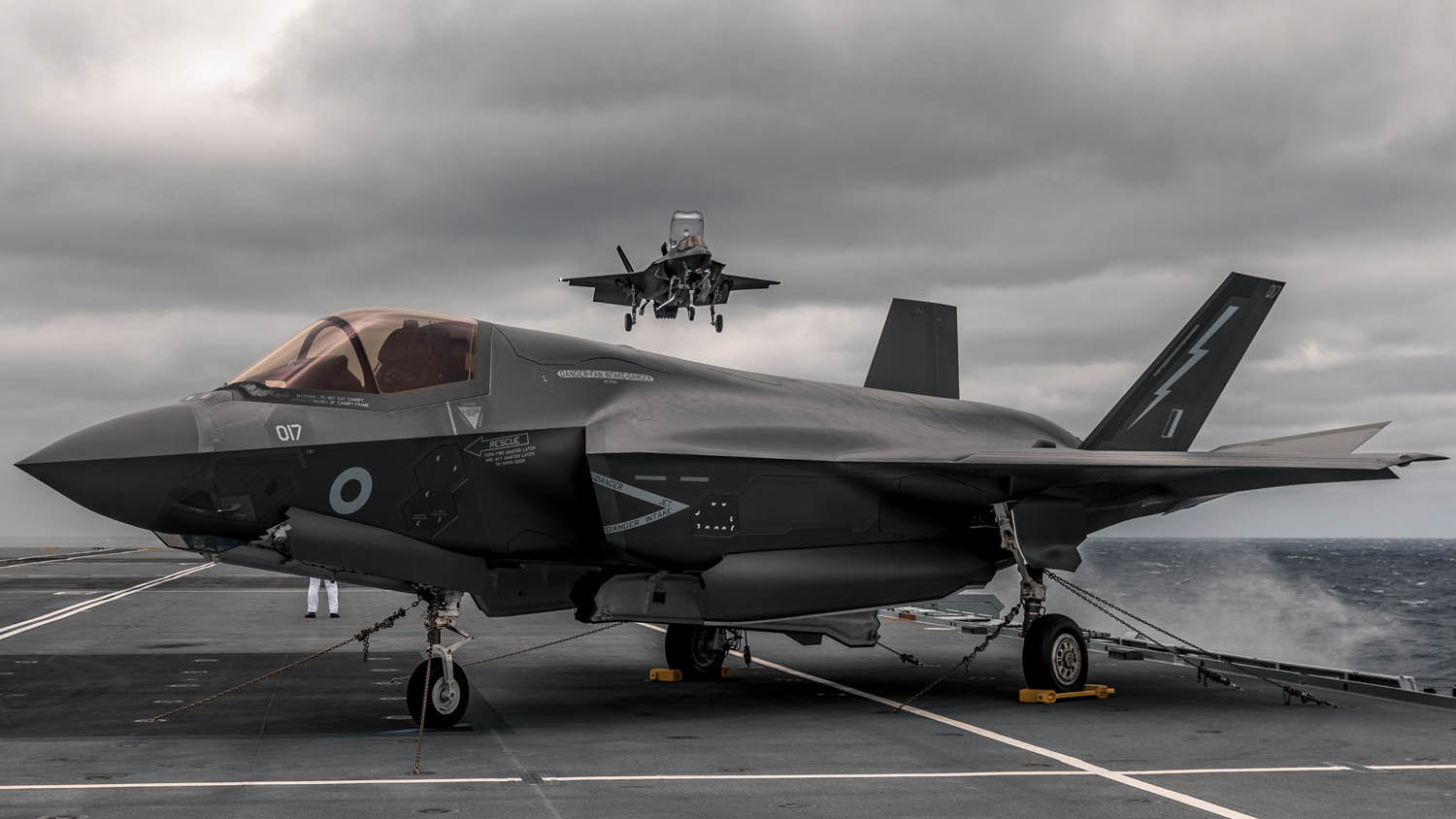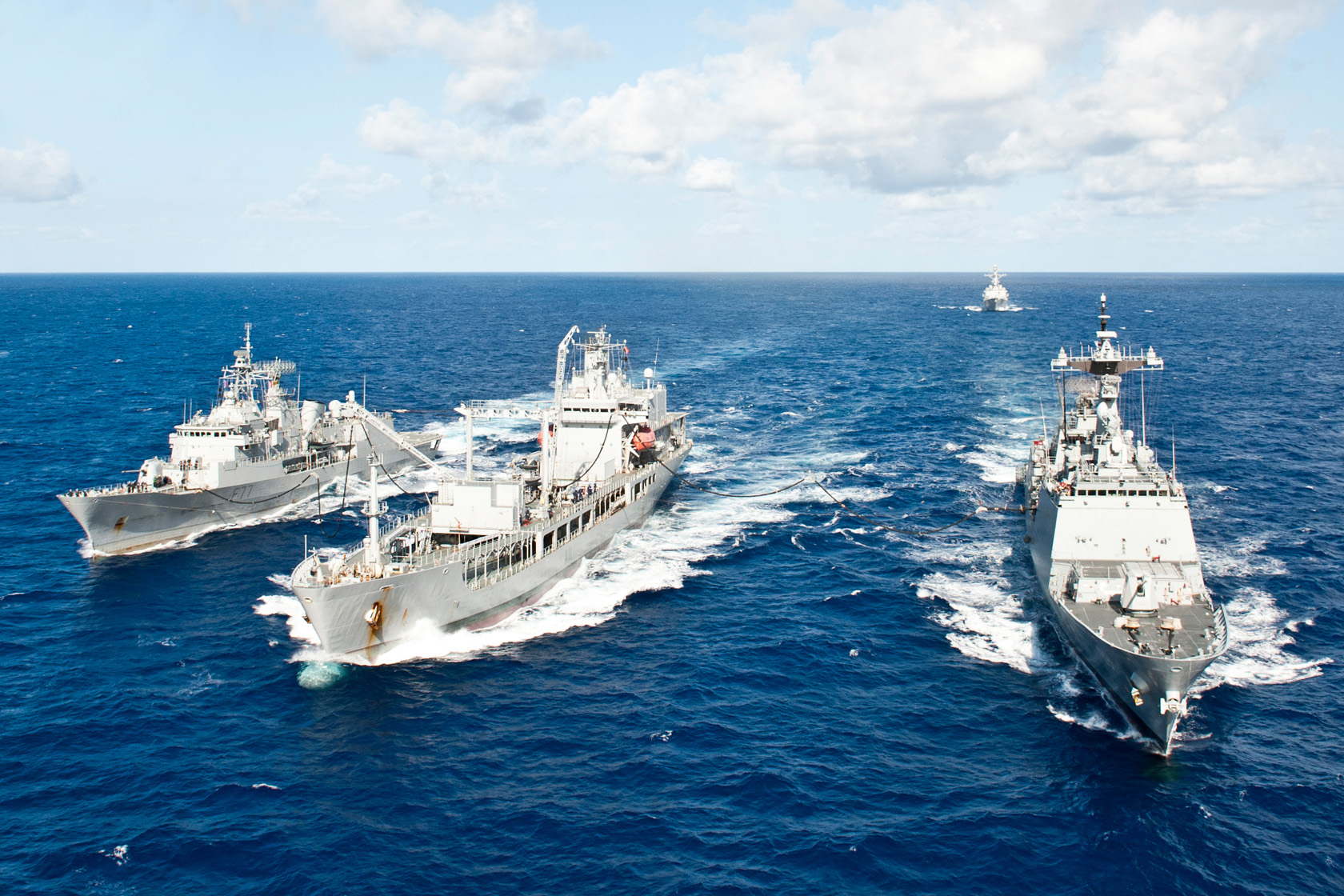Recently, India, Australia, Japan and the US, teamed up for the latest round of Malabar exercises off the coast of Guam in the Pacific Ocean. These four countries, collectively called “QUAD”, are the core members of what Beijing calls an “anti-China alliance”.
The drills involved the participation of the US Navy’s USS Carl Vinson aircraft carrier along with other warships, Japanese aircraft carrier JS Kaga (which shall host F-35Bs), two Australian warships, while Indian deployed two warships along with a P-8I Neptune Maritime Patrol Aircraft.
Last year, the exercise also involved the participation of the Indian Aircraft Carrier INS Vikramaditya.

Aircraft Carriers
The involvement of aircraft carriers and air wings are a crucial aspect of Malabar exercises because of the importance they hold in case of containing a belligerent China.
Apart from area dominance, Aircraft Carriers have been an essential part of the American activities in the Middle East, Afghanistan and Africa, and undertaking ‘freedom of navigation operations near Taiwan Strait to counter Beijing’s authoritative claims along the nine-dash line.
The presence of an aircraft carrier and its escort ships and submarines make for an impressive firepower dominance and psychological impact unsurpassed by any other weapons system in the world.
To note, the only major powers in the QUAD to operate a fully functional aircraft carrier with fixed-wing combat aircraft are India and the United States, with Japan and Australia being heavily reliant on American aid for their military needs.
What’s more interesting is that both the Indian and the US Navy operate combat aircraft whose development story has been like the two poles of a magnet: each was made at the height of the cold war and by the rival superpowers.
The Indian Navy operates the MiG-29K, a development of the venerable MiG-29 fighter jet made by the Soviet Union, whereas the US Navy operates the highly sophisticated F/A-18E/F Super Hornets.
In order to operate in a joint environment against the PLA Navy’s own Soviet-derived 4th- gen jets, working on a coordination plan is imperative for the Indian and US Navies. In terms of operation, Japan and Australia already operate American-origin fighter jets, which makes it quite easy for interoperability and cooperation with the American link-16 network.
Training with the Indian Navy’s Russian-origin jets could turn out to be a win-win situation for QUAD nations; practicing with Soviet-era aircraft identical to what the Chinese PLA Navy operates on its Liaoning and Shandong aircraft carriers – the J-15, a derivative of the Soviet Su-33.
The MiG-29K
The Indian Navy already has vast experience of operating Carrier Battle Groups for 60 years. It operated the INS Vikrant, commissioned in 1961, the INS Viraat, commissioned in 1987 – and before the retirement of Vikrant in 1997, the Indian Navy had two aircraft carriers in active service for 10 years.
Currently, after the decommissioning of Viraat in 2017, the Indian Navy operates the INS Vikramaditya: a STOBAR carrier with a complement of over 20 MiG-29K fighter jets and over 10 helicopters of varying roles.
Another aircraft carrier, named Vikrant after the first carrier and in a similar configuration to Vikramaditya, will be commissioned into the service next year.
Being a derivative of the MiG-29B, the K variant was the first digital fly-by-wire aircraft operated by the Indian Armed Forces upon its introduction in 2013-2014. While the original MiG-29 was made as an air superiority fighter, the MiG-29K is an all-weather multirole fighter equally capable of precision strikes on surface targets.
To achieve this, it is equipped with multifunction radars, Hands-on-Throttle-and-Stick (HOTAS) controls, BVR missiles, anti-ship and anti-radiation missiles, and other advanced air-to-air and air-to-ground precision munitions.
The Indian Navy also operates Israeli Electronic Warfare pods on its MiG-29Ks. The aircraft can also provide ‘buddy refueling’ to other aircraft and is capable of aerial refueling missions, a feature absent on the early versions of the MiG-29.
The aircraft has seen considerable service, and gathered media spotlight when they were also deployed along the contentious Sino-Indian border in Eastern Ladakh last year.
However, the Indian Navy is said to be looking for replacements for the MiG-29K, in a competition involving the Dassault Rafale M and F/A-18E/F Super Hornet fighter jets.
Japan, Vietnam Talks
Amid growing Chinese belligerence, Japanese Defense Minister Nobuo Kishi and his Vietnamese counterpart, Phan Van Giang, talked on Tuesday about enhancing cooperation in the region to protect freedom of navigation and achieve other security goals.

“Renewing their resolve to contribute more proactively to the peace and stability of the region and the international community… the ministers shared the view to further accelerate various collaborative efforts, including high-level engagement and multilateral cooperation,” a post-meeting statement read.
The ministers, who met in Tokyo almost three months after a bilateral in Hanoi, discussed the current regional security situation, including in the East and South China Seas.
“They shared a strong opposition to… any unilateral attempts to change the status quo by coercion and confirmed the importance of Japan and Vietnam to continue to cooperate in upholding the existing international order based on the rule of law,” the Japanese defense ministry said.
On North Korea, Minister Kishi said that the Communist state’s ballistic missile program posed a serious challenge to the international community and promised to seek its complete, verifiable and irreversible dismantlement.
The ministers oversaw the signing of two memoranda of cooperation on cybersecurity and military medicine. Kishi confirmed that Japan would work closely with Vietnam to organize a Japan-ASEAN cybersecurity training program and that it would accelerate the delivery of ships to Vietnam under the September pact.
US Actions Toward China, Russia Aggressive
The United States is taking the same aggressive actions against China in the military sphere, including the tactics of deterrence, as against Russia, both countries are jointly opposing Washington, Chinese Defense Minister Wei Fenghe said at a working meeting with Russian Defense Minister Sergei Shoigu on Tuesday.
“The comrade minister just said about military threats, pressure and deterrence from the United States against the Russian Federation. The United States is also taking such actions against China. I completely agree with your assessments,” Wei said.
He noted that this year, China and Russia celebrated the 20th anniversary of the signing of an agreement on good-neighborliness, friendship and cooperation between China and Russia.
“And we celebrate tremendous fruitful cooperation in all areas. Especially in the face of insane US containment and pressure, China and Russia are pulled together like a great mountain. Our friendship is unbreakable.
Together we opposed US hegemony and oppose fake democratic US regime and false multiculturalism, as well as new manifestations of the Cold War in a new form. And in this way we showed our relationship better than allied ones,” the minister said.
- Via Sputnik News Agency
- Follow EurAsian Times on Google News




